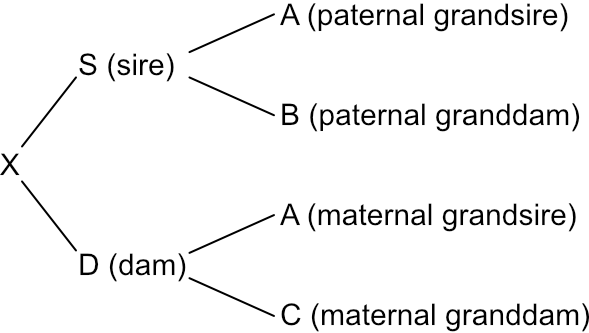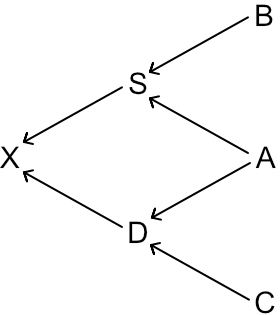The Effect of Mating Systems on Gene and Genotypic Frequencies: Inbreeding
Once animals have been selected for breeding, the next step is to decide which are mated to which via a mating system. Some examples of mating systems, each with different intentions, were briefly covered here.
Last week we saw how selecting for a particular allelic expression (ie selecting for ‘best’ phenotype) can change the gene frequency significantly in a population. Genotypic frequencies change indirectly as a result — they ‘tag along’.
Mating systems do however change genotypic frequencies directly, with gene frequencies less affected. These systems fall into two general categories: inbreeding systems and outbreeding systems.
Inbreeding is a mating system which increases homozygosity.
Outbreeding is a mating system which increases heterozygosity.
We’ll cover inbreeding here, and outbreeding in the next post.
Inbreeding increases homozygosity by mating related animals. Related animals are more likely to have many alleles in common, and mating two related animals increases the likelihood of progeny becoming homozygous for a desirable allele. Inbreeding helps to fix the ‘AA’ or ‘aa’ genotype (whichever is desirable) in place.
Consider the following pedigree tree, which is a typical example of inbreeding, or linebreeding. The same animal A appears both as the paternal and maternal grandsire of animal X:
We could also say that both the sire and dam share a common ancestor, A.
Compare the above diagram with this arrow diagram below:
A pedigree tree shows the relationships of all ancestors, and the same animal may appear in several places, as A does. An arrow diagram differs in that it shows the flow of genetic material from ancestors to descendants. A particular animal will appear just once, while ancestors that do not contribute to inbreeding are excluded. (B and C were kept in this arrow diagram so as to make comparisons of the two diagrams clearer.)
Here you can see how alleles at a particular locus will flow from A to S and D. If S and D both acquire the same allele from A, there is a chance that X will become homozygous for that allele. If homozygous, then that allele is fixed in place for X, and X will only ever pass that particular allele on to all of its progeny. X’s breeding value with respect to passing on the desirable phenotype has increased.
This sounds straightforward and simple to implement, but that chance of X being homozygous through a common ancestor is only one in eight. (We’ll cover the maths later when going into more depth on linebreeding.)
Nonetheless, linebreeding is a well-established and time-honoured practice for ‘fixing’ genes into a population as it increases homozygosity and decreases heterozygosity.
The next post will discuss gene frequencies with respect to outbreeding.


Leave a comment